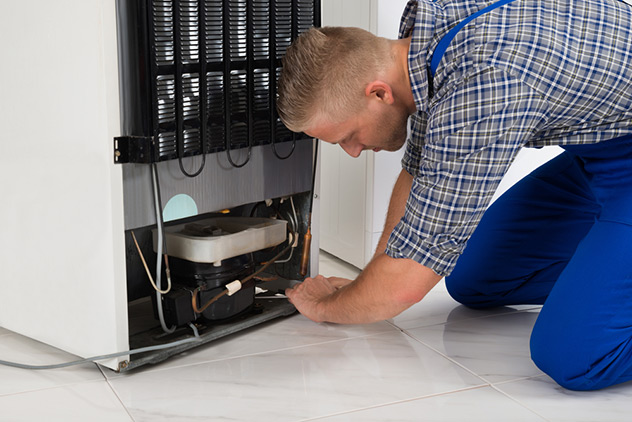A refrigerator that suddenly stops cooling is more than just inconvenient—it can lead to spoiled food and costly waste. Before calling a repair technician, there are several common causes you can check yourself. This step-by-step guide will help you troubleshoot why your refrigerator isn’t staying cold and what you can do to fix it.
1. Check the Thermostat Settings

Sometimes, the temperature dial may be accidentally adjusted during cleaning or when moving items around.
Fix:
Ensure the thermostat is set to the recommended cooling level (usually between 35°F–38°F for the fridge, and 0°F for the freezer).
2. Make Sure the Fridge Has Power
If your fridge isn’t cooling and the light is off inside, it may not be getting power.
Fix:
- Check the power cord and outlet.
- Reset the circuit breaker if needed.
- Plug another device into the same outlet to ensure it’s working.
3. Inspect the Condenser Coils

Dusty or dirty condenser coils can block heat transfer, causing cooling issues. This is one of the most common causes of a fridge not cooling efficiently.
Fix:
Unplug the fridge and vacuum or brush the coils—typically located behind or underneath the unit—at least twice a year.
4. Check the Door Seals (Gaskets)

If cold air escapes due to a faulty door gasket, the fridge has to work harder and may not maintain the proper temperature.
Fix:
- Inspect the door seals for cracks or looseness.
- Clean them with warm soapy water.
- Replace the gasket if it doesn’t seal tightly.
5. Ensure Proper Airflow Inside the Fridge
Overpacking your fridge can block vents and prevent cold air from circulating properly.
Fix:
Reorganize the contents to leave space around air vents—usually located at the back of the fridge.
6. Listen for the Evaporator Fan
The evaporator fan circulates cold air throughout the fridge and freezer. If it’s not working, the fridge may not cool properly even if the compressor is running.
Fix:
Open the freezer and listen for the fan. If it’s silent or making unusual noises, it might need to be replaced.
7. Test the Start Relay and Compressor
The start relay helps the compressor kick on. If it’s faulty, the compressor won’t run, and the fridge won’t cool.
Fix:
This requires a multimeter and basic electrical knowledge. If unsure, it’s best to call a certified appliance technician.
Final Thoughts
When your refrigerator isn’t cooling, it doesn’t always mean you need a new appliance. Many common issues—like dirty coils or faulty door seals—are easy to fix at home. Regular maintenance can prevent cooling problems and extend the life of your fridge.

